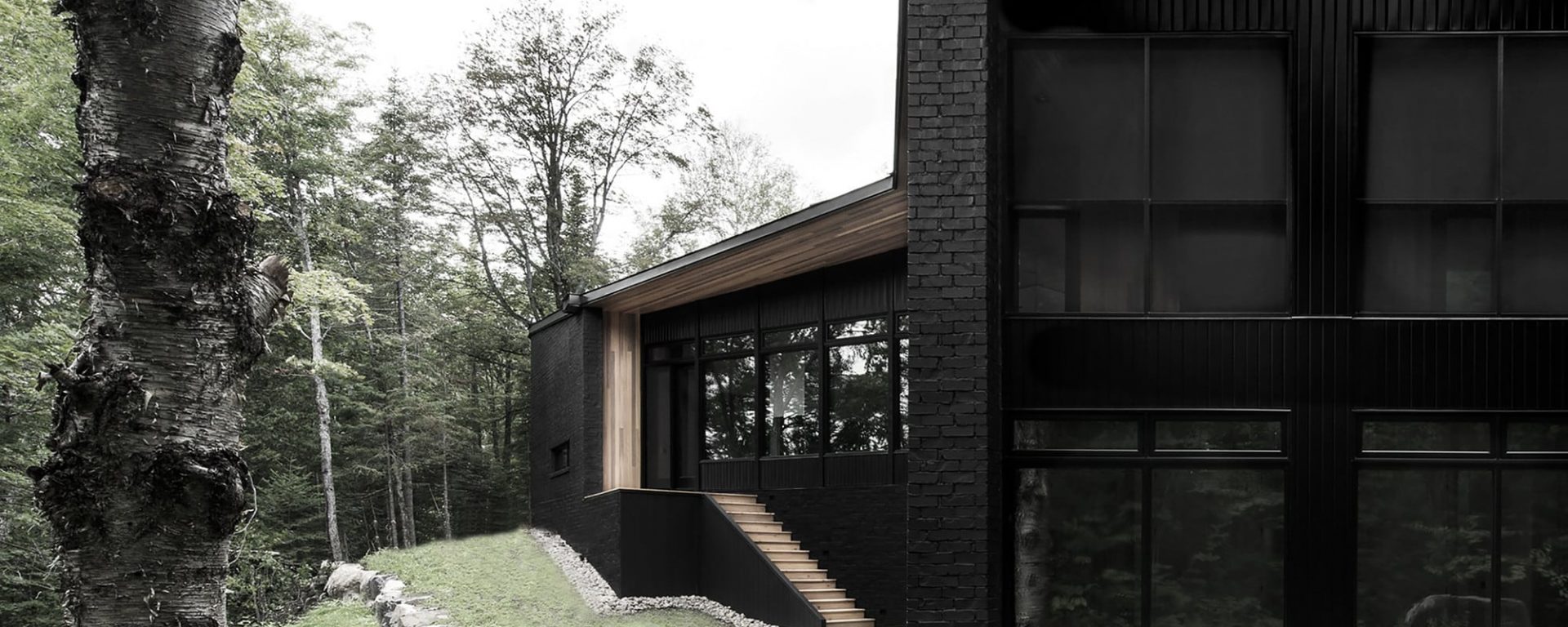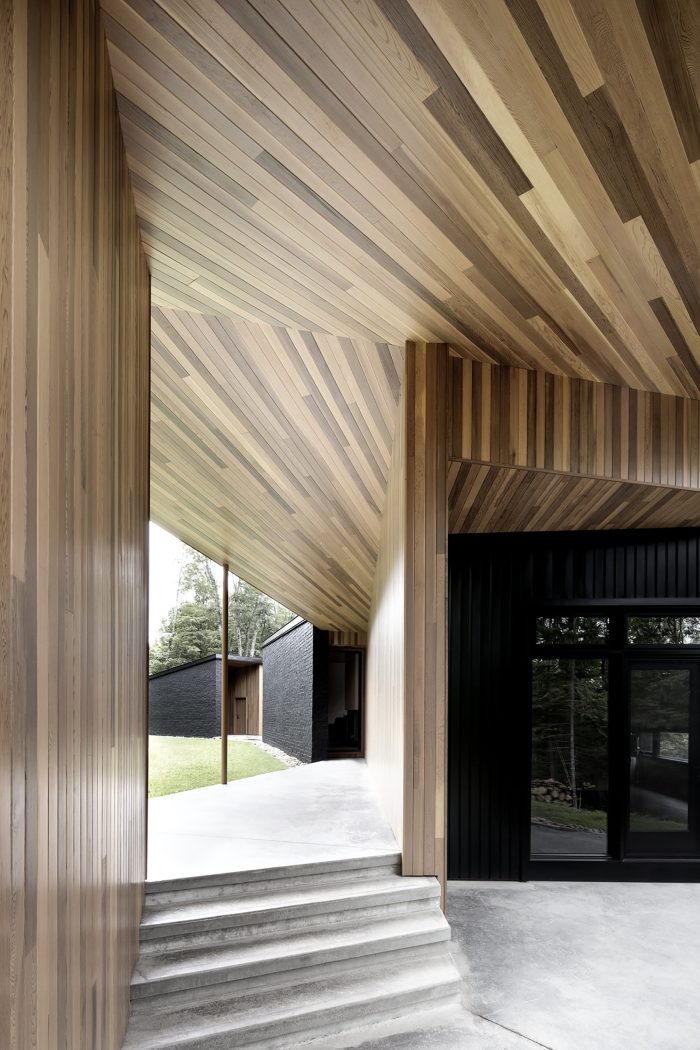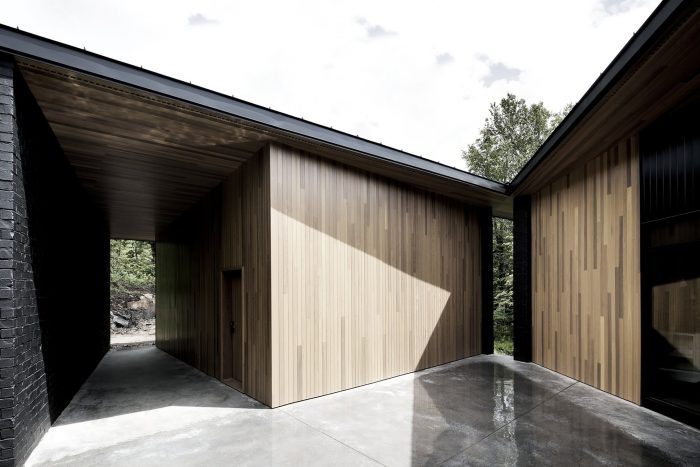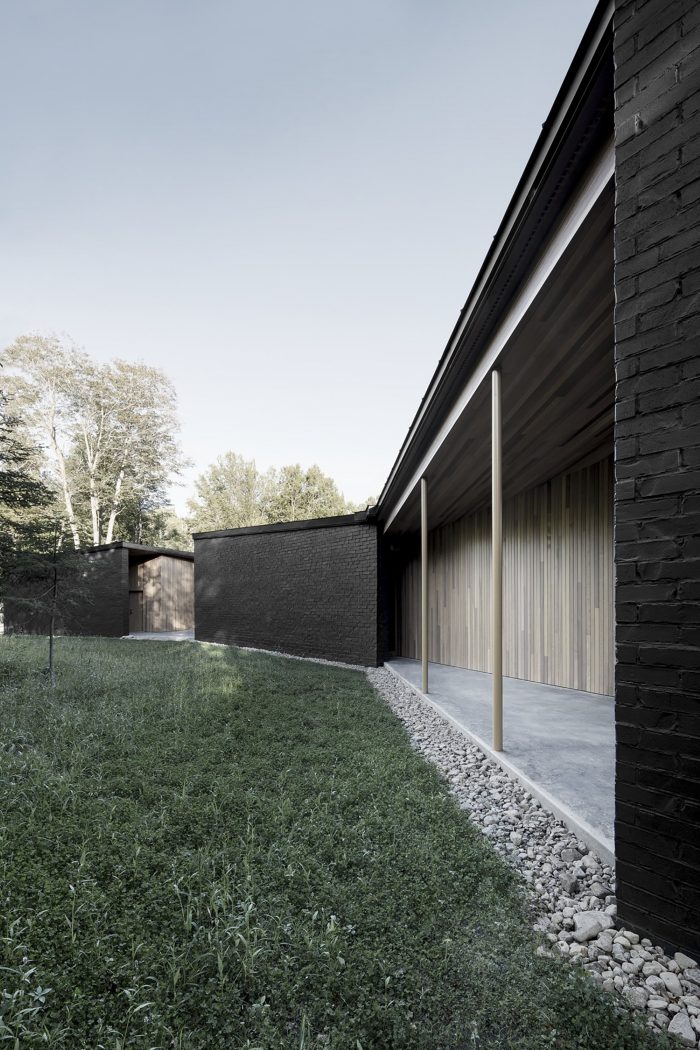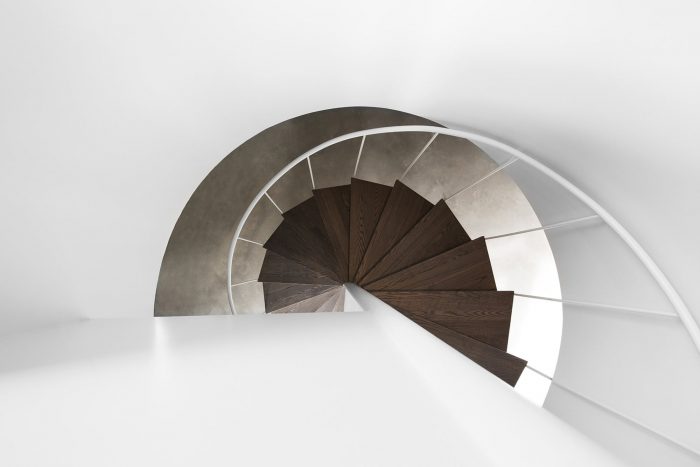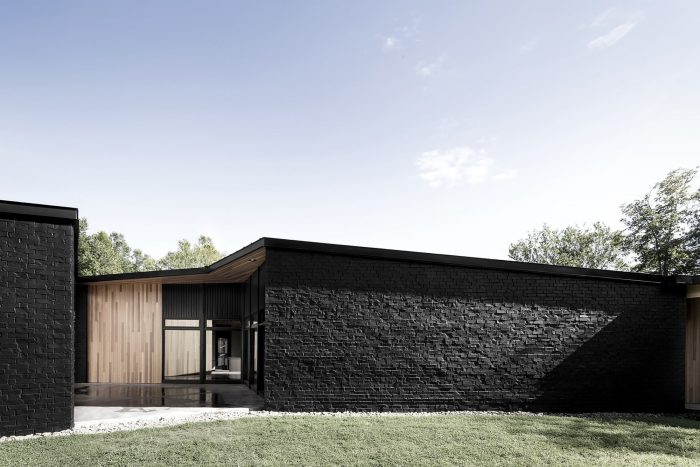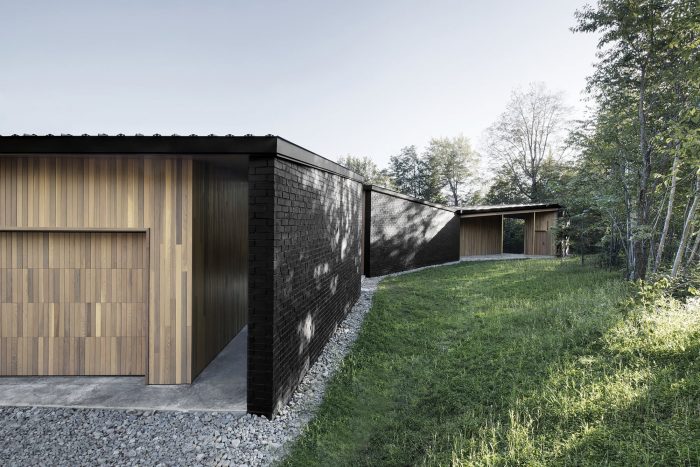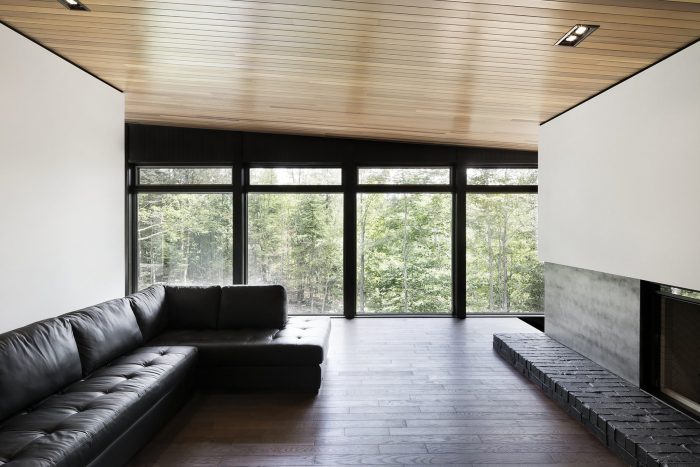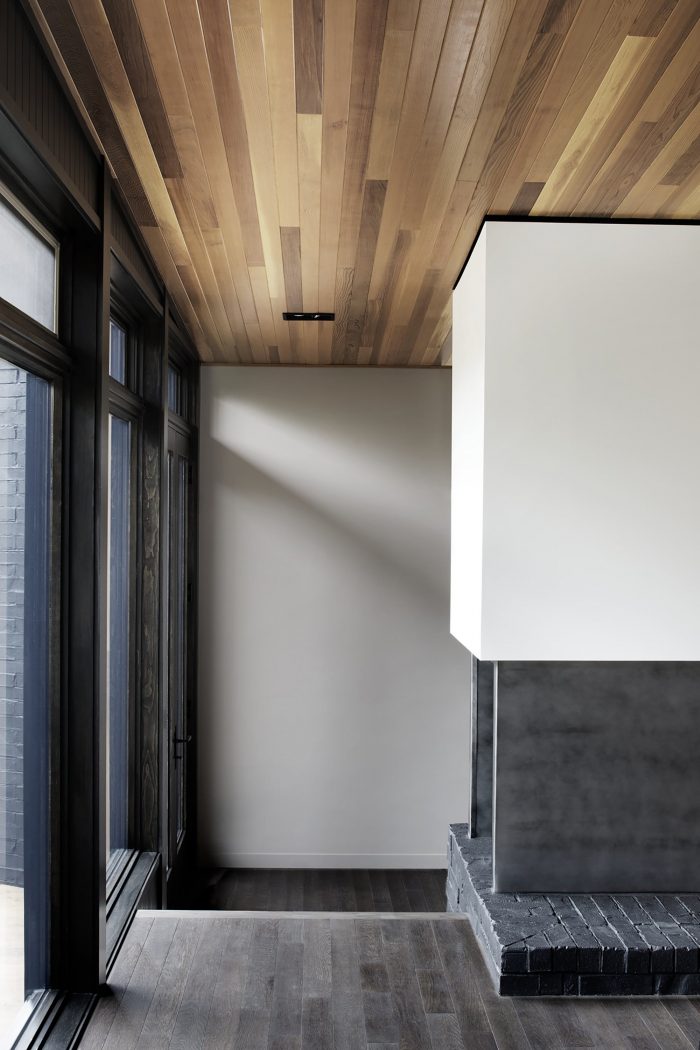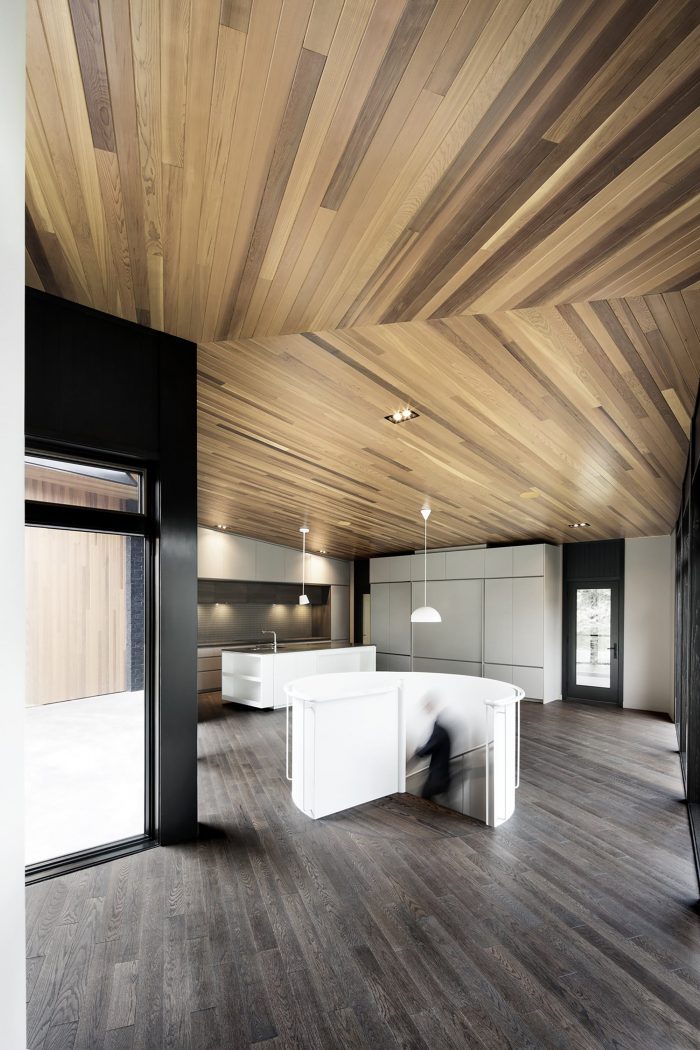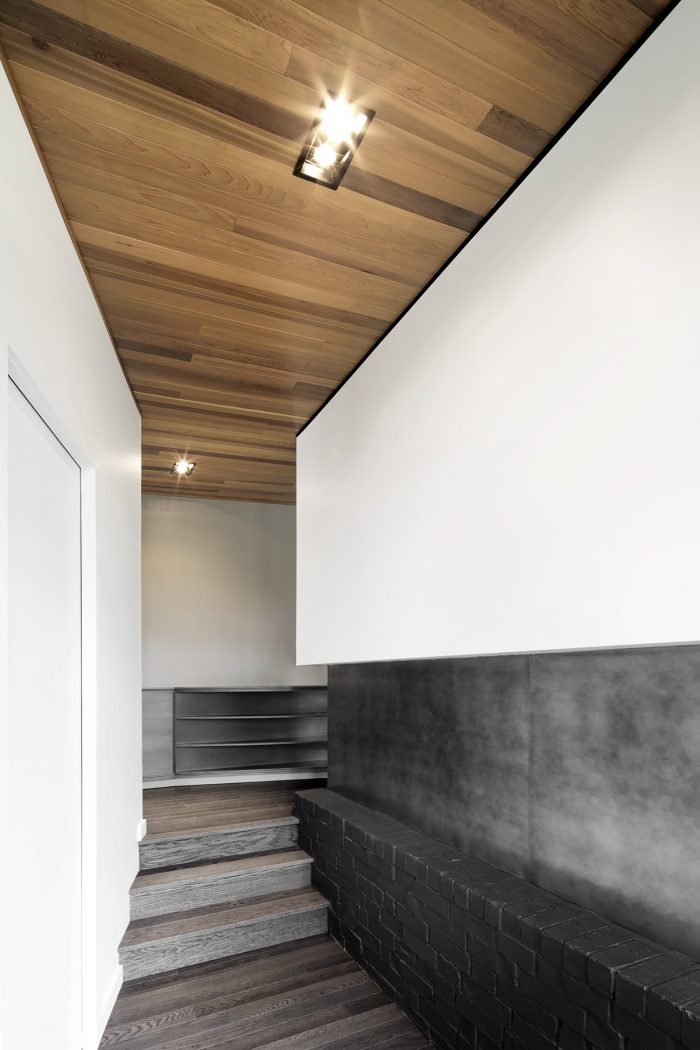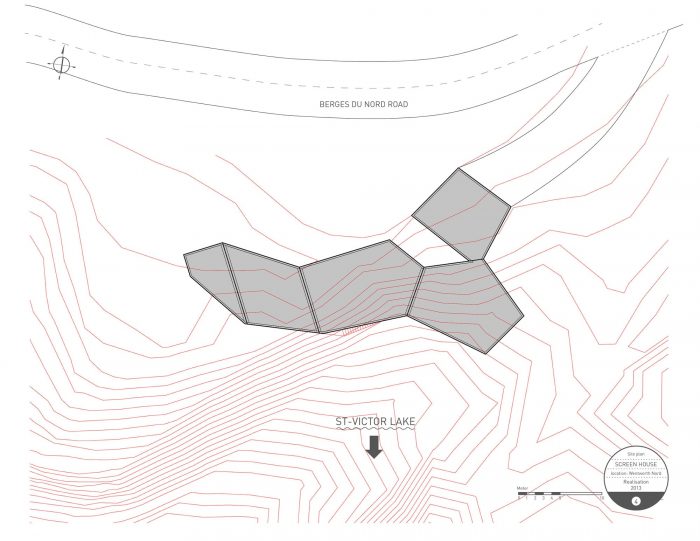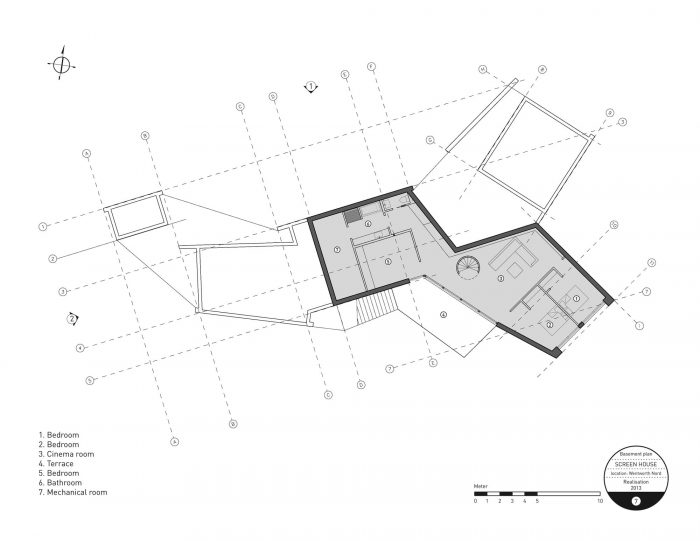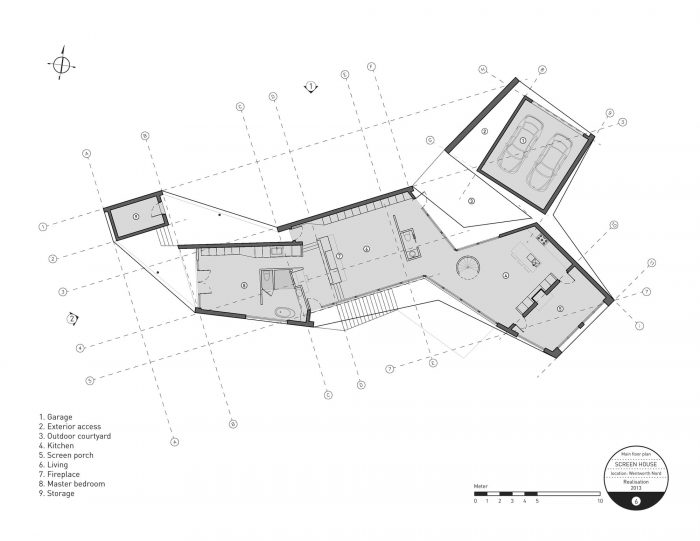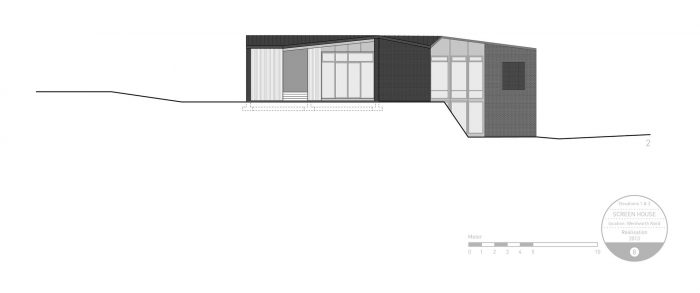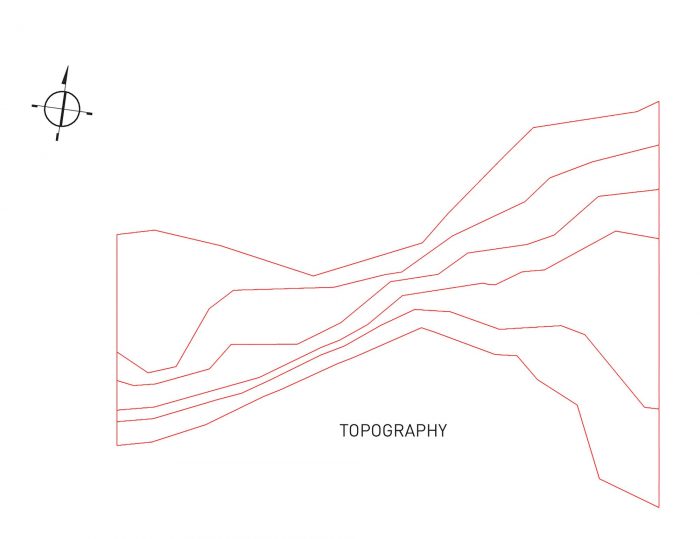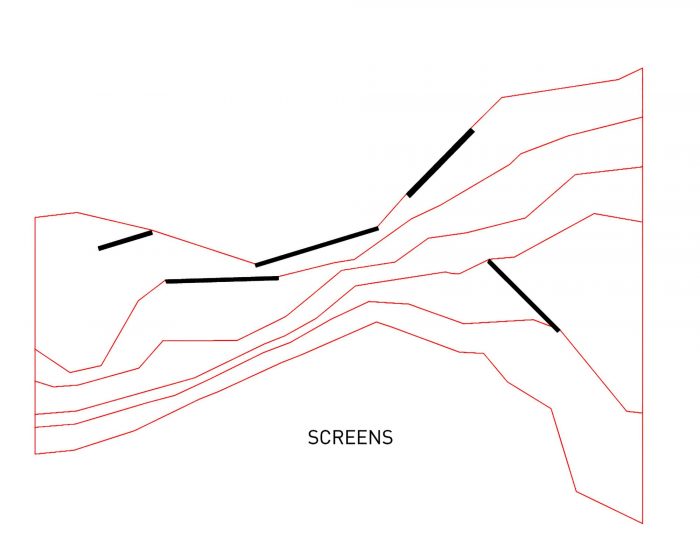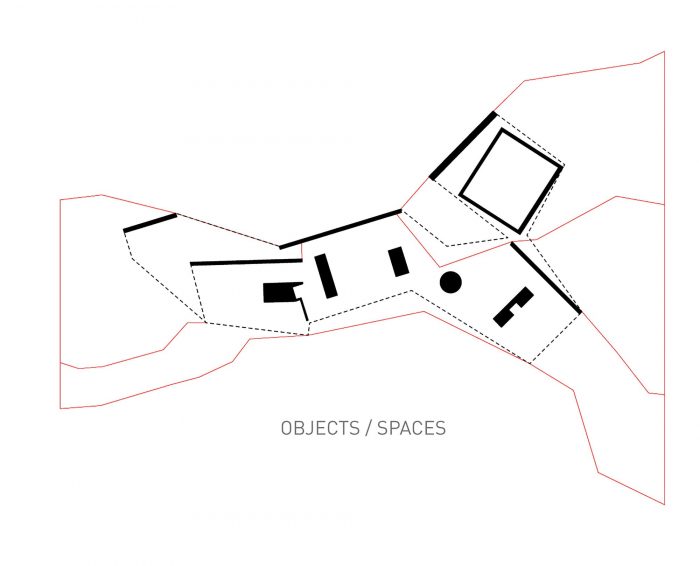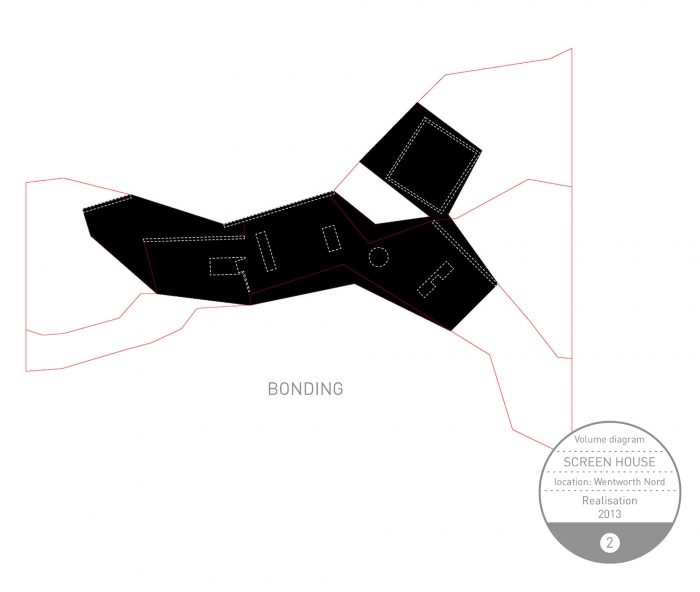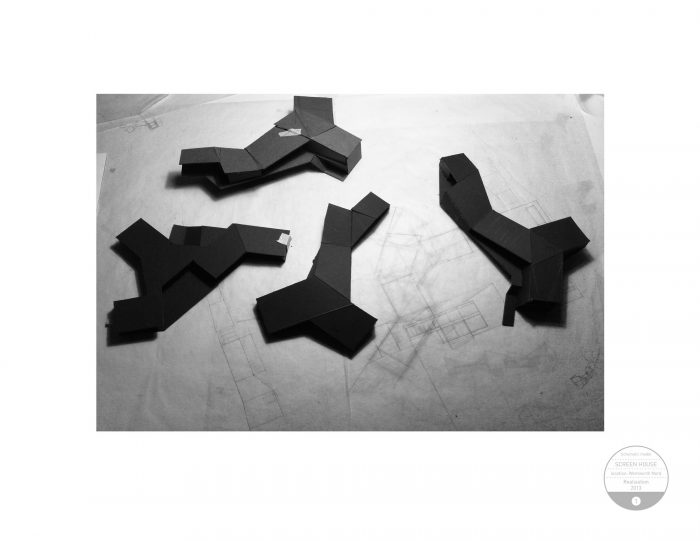这个项目的背景限制,位于一个湖边,使我们能够继续探索面向感知考虑的工作的可能性。场地狭长,有几个后退限制(紧邻湖泊、溪流、街道等)。因此,可建区域有些狭窄和不规则,但这提供了一个机会来设计一个典型的 “时尚 “住宅的规则之外的项目。布局方面的困难也促进了在介绍概念时与业主的讨论,因为这里不存在理想化形式的问题。相反,这个地方强加了一个非预设的概念方法,立足于可能,而不是现有的东西。
The contextual constraint of this project, located on a lakeshore, enabled us to pursue the exploration of the possibilities of work geared to perceptual considerations. Narrow in depth, the site presented several setback constraints (next to a lake, stream, street, etc.). The buildable area was therefore somewhat narrow and irregular, which nonetheless offered the opportunity to design a project outside the typical precepts of “stylish” residences. The difficulty with respect to layout also facilitated discussions with the owners during the presentation of the concept, because there could be no question here of an idealized form. On the contrary, the site imposed a non-premeditated conceptual approach, anchored in the possible rather than what was there.
因此,该项目经历了一个漫长的酝酿过程,在这个过程中,几何的复杂性被严格地在现场验证,以确认或拒绝某些关于将产生的知觉质量的数据。这基本上涉及到阻断与街道的关系,同时增强湖泊的视野,无论是从住宅内还是从街道上,都要留出视线,以标明原木司机沿湖走过的路径。
The project therefore followed a long gestation process, in which the geometrical complexity was scrupulously validated in situ to confirm or reject certain data regarding the perceptual quality that would result. This essentially involved blocking the relationship with the street while enhancing the view of the lake, both from inside the residence and from the street, by leaving sight lines to past places marking the trails taken by the log drivers along the lake.
就像一个屏幕,所形成的建筑群的形状是围绕着一个 “铰链 “空间衔接的,这是一个因弯曲空间而产生的几何空隙:人们同意将这里作为进入建筑的主要通道。这个地方形成了住宅唯一的主要突破口,从绕湖的道路上可以看到。
Like a screen, the resulting shape of the complex is articulated around a “hinge” space, a geometrical void resulting from bending the space: it was agreed to make this the main access to the building. This place forms the residence’s only major breach, visible from the road circling the lake.
这种小的内院向街道开放,在邻近的空隙和建筑限制之间创造了一个过渡,与 “Les Marais “项目的 “切口 “精神相同。它框住了接待处,最重要的是,创造了一个透明度,通过两面玻璃墙的厚度揭示了 “选择 “的湖景。围绕着这个中心点,一个螺旋形的楼梯被设置在两翼的两个主轴的交界处,允许两层楼之间在一个既复杂又有丰富 “视点 “的几何交汇点进行交流。
This kind of small inner courtyard opens onto the street and creates a transition between the neighbouring void and the construction limits, in the same spirit as the “cutouts” of the “Les Marais” project. It frames the reception and, above all, creates a transparency that reveals a “chosen” view of the lake through two glazed wall thicknesses. Around this central point, a spiral staircase is set at the junction of the two main axes of the wings, allowing communication between two floors at a geometrical meeting point that is both complex and rich in “points of view”.
在内部,一连串的白色 “空间物体 “占据了地板区域的中心,就像各种形状的大型家具。它们 “封锁 “了空间,而不是将其分割开来,在建筑内提供了不同的路线选择,同样,也提供了住宅及其附近景观的多个视角。
Inside, a succession of white “space objects” occupies the centre of the floor areas, like large furniture in a variety of shapes. They “block” the space instead of compartmentalizing it, offering different route options within the building and, by the same token, multiple points of view of the landscape of the residence and its vicinity.
该项目的材料语言追求过去经验中的 “层 “的概念。一个回收的砖块外壳被涂成黑色,以显示其作为一个围墙的质量,一个中性的视觉屏幕。然后在这个围墙上开凿出可居住的区域(包括内部的小院子),与客户规定的程序性部分分开。这些 “残余 “的地方是对形式的连续操作的结果,由于其非预设的方面,有可能成为项目最重要的地方,那些将容纳居住者沉思的时刻。
The project’s material language pursues the concept of “layers” from past experience. A recycled brick envelope is painted black to reveal its quality as an enclosure, a neutral visual screen. Cutouts are then made in this envelope to reveal the habitable areas (including the small inner arrival courtyard), separate from the programmatic components prescribed by the client. These “residual” places result from successive manipulations of the form and, by their non-premeditated aspect, potentially become the most significant places of the project, those that will accommodate the occupant’s moments of contemplation.
在某种程度上,这个项目可能是实验产生的 “尝试 “的综合,这导致了其他两个项目的提出。它适合于一种概念性的方法,其中几何构成的规则不再倾向于理想化,而是倾向于形式的实验。推而广之,这种方法可以指将建筑经验重新定位在关于我们环境的未来的辩论核心的必要性:已经存在的东西,已经可见的东西。
To some extent, this project could be the synthesis of “attempts” resulting from experimentation, which led to the other two projects presented. It fits around a conceptual approach, in which the rules of geometrical composition no longer tend to idealization but to experimentation with form. By extension, this approach could refer to the necessity to reposition the architectural experience at the core of the debate on the future of our environment: what is already there, what is already visible.
Architects: Alain Carle Architecte
Area : 5405 ft²
Year : 2013
Photographs :Adrien Williams
Manufacturers : Lepage Millwork
City:WENTWORTH-NORD
Country:Canada

